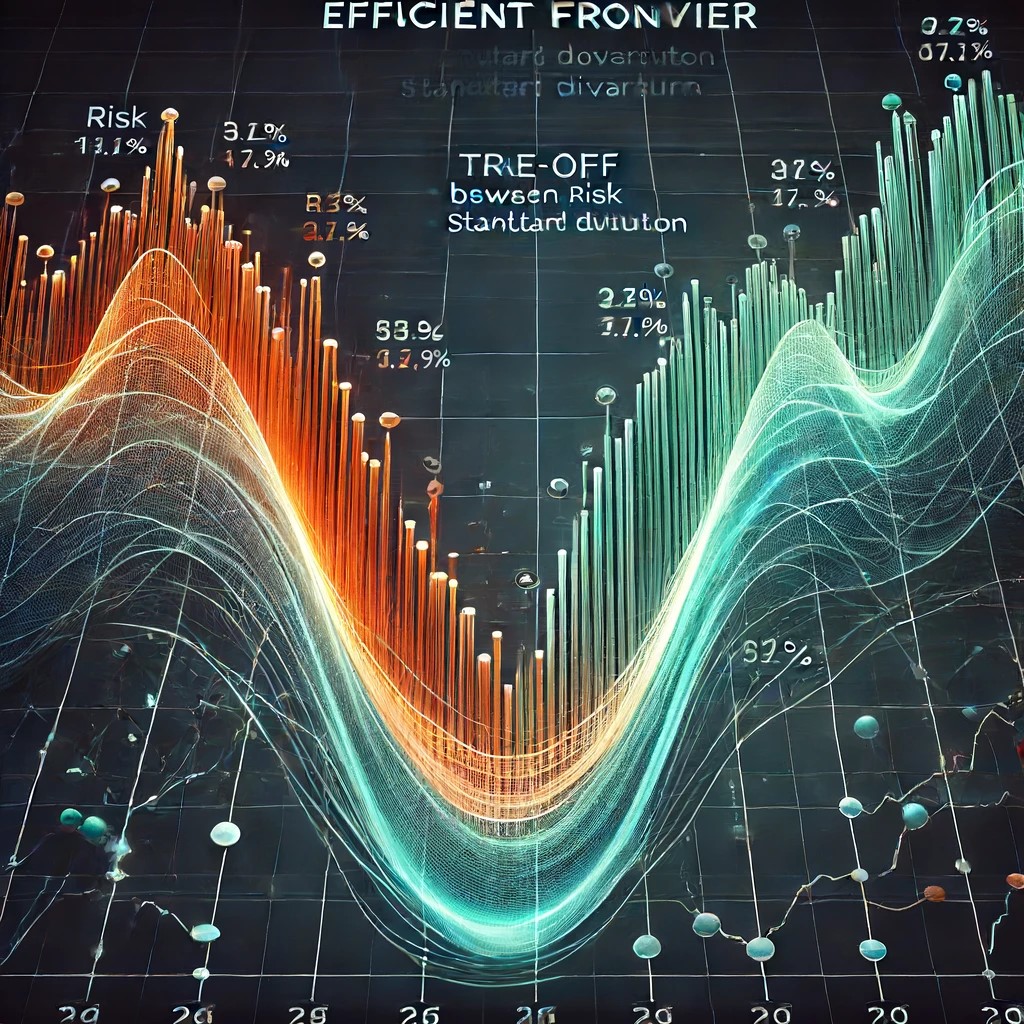Modern Portfolio Theory (MPT), introduced by Harry Markowitz in 1952, revolutionized the way investors approach portfolio management. By focusing on the relationships between assets and the overall risk and return of a portfolio, MPT provides a framework for maximizing returns while minimizing risk. This article explores the core principles of MPT, its current applications, and future trends in portfolio management.

Core Principles of Modern Portfolio Theory
1. Diversification:
One of the key tenets of MPT is diversification. By holding a variety of assets, investors can reduce the overall risk of their portfolio. The idea is that different assets will respond differently to the same economic event, thus smoothing out potential losses. Diversification allows investors to achieve a more stable return on investment by mitigating the impact of any single asset’s poor performance.
2. Efficient Frontier:
The efficient frontier is a graphical representation of optimal portfolios that offer the highest expected return for a given level of risk. Portfolios that lie on the efficient frontier are considered efficient, as they maximize return for a given risk level. Investors aim to construct portfolios that lie on this frontier to achieve the best possible risk-return tradeoff.

Current Applications of Modern Portfolio Theory
1. Index Funds and ETFs:
MPT has significantly influenced the development of index funds and exchange-traded funds (ETFs). These investment vehicles allow investors to achieve broad market exposure and diversification with lower costs. By tracking the performance of market indices, index funds and ETFs provide a practical application of MPT’s principles.
2. Robo-Advisors:
Robo-advisors leverage MPT to offer automated investment management services. Using algorithms, these platforms construct and manage portfolios based on an individual’s risk tolerance, investment goals, and time horizon. Robo-advisors have democratized access to sophisticated portfolio management strategies, making MPT’s benefits available to a wider audience.

Future Trends in Portfolio Management
1. Integration of ESG Factors:
Environmental, Social, and Governance (ESG) factors are becoming increasingly important in portfolio management. Investors are seeking to align their investments with their values while also considering long-term risks and opportunities. Integrating ESG factors into MPT can enhance diversification and identify companies that are better positioned for sustainable growth.
2. Advancements in Technology:
Technological advancements, such as artificial intelligence and machine learning, are enhancing the application of MPT. These technologies can process vast amounts of data and identify complex patterns, enabling more precise portfolio construction and optimization. The future of portfolio management will likely see increased reliance on technology to implement MPT principles.
Conclusion
Modern Portfolio Theory remains a cornerstone of investment strategy, providing a systematic approach to balancing risk and return through diversification and optimization. Its principles are widely applied in various aspects of portfolio management, from index funds to robo-advisors. As technology advances and ESG considerations gain prominence, the future of portfolio management will continue to evolve, building on the foundational concepts of MPT to meet the changing needs of investors.






